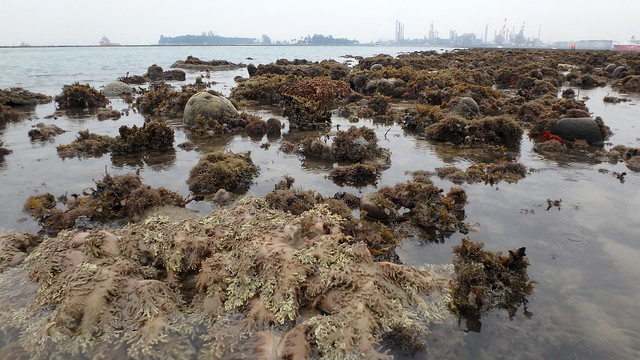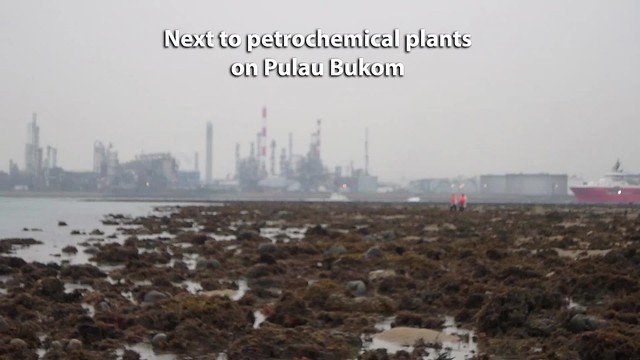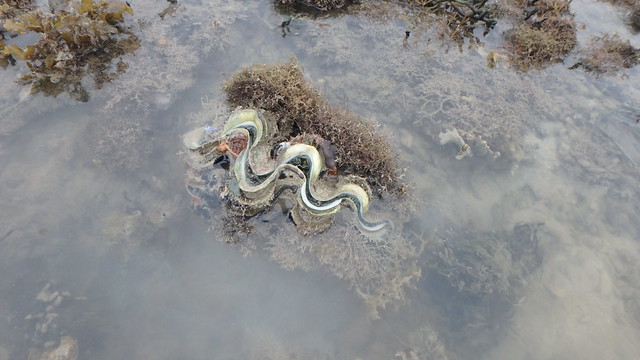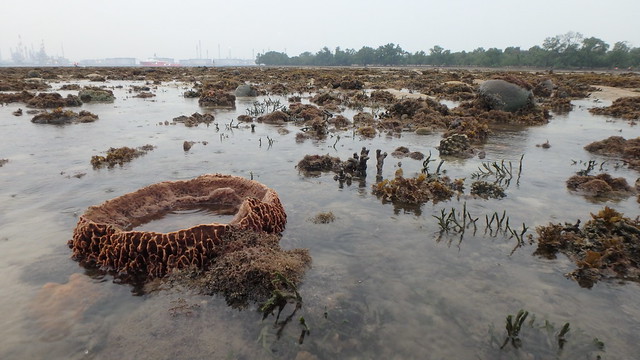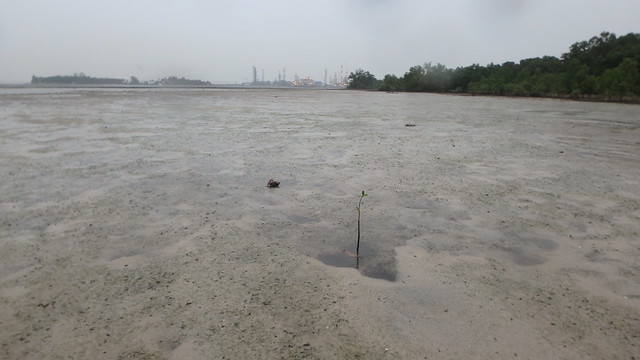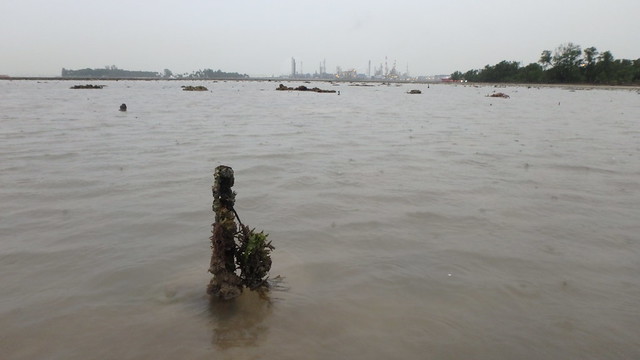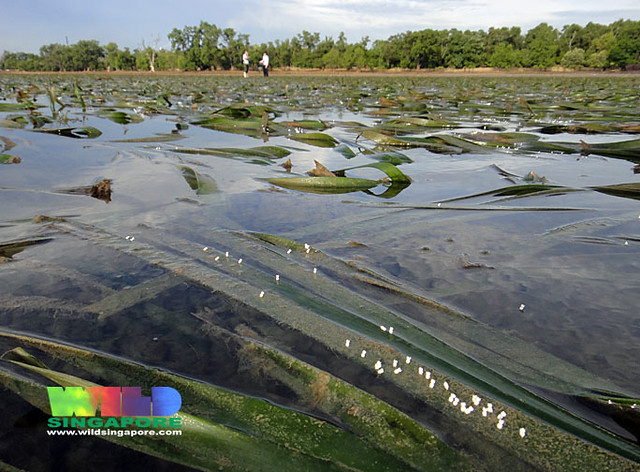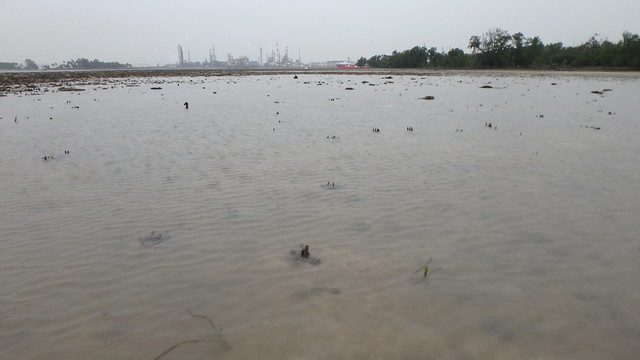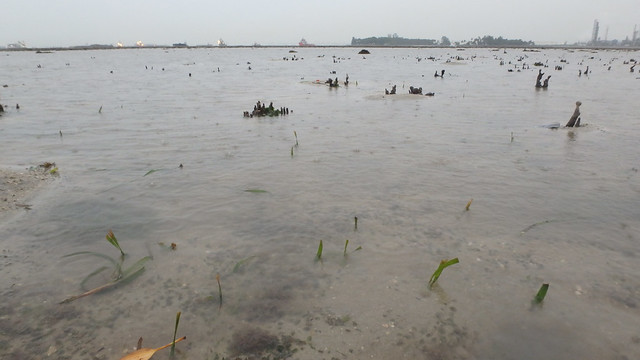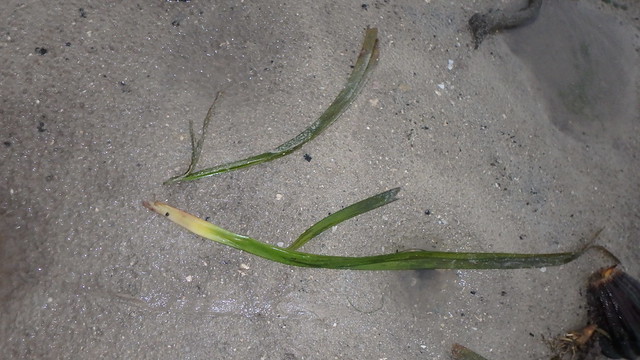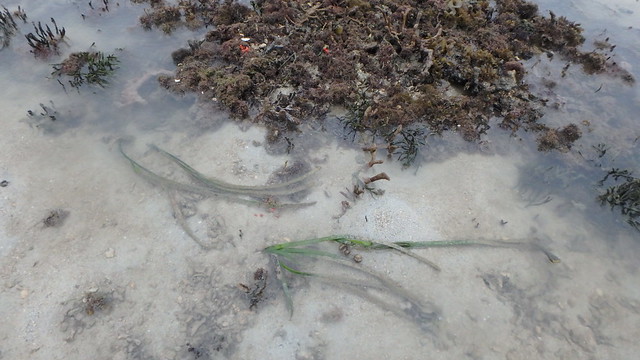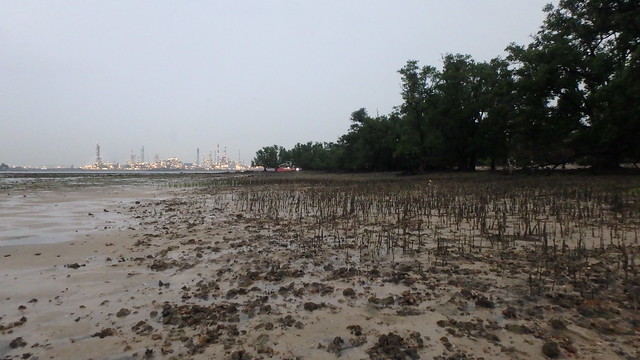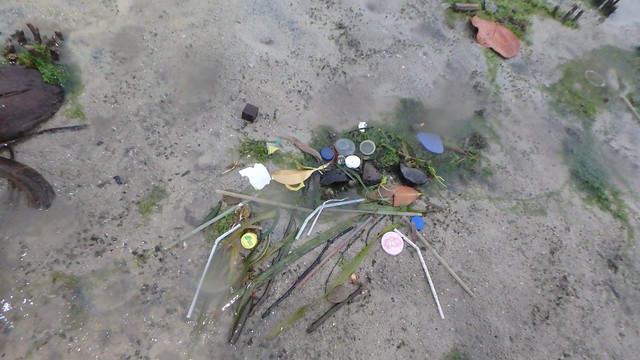A good variety of hard and soft corals, with Giant clam, interesting anemones and anemonefishes. Alas, the seagrass meadows have yet to recover.
Arriving at first light in a drizzle after a stormy morning, we found this reefy part of Pulau Semakau to be very much alive.
Here's a video clip of some of the more interesting corals and marine life that I saw.
Some of the corals were producing mucus, probably a response to the heavy rain. Corals don't really like fresh water.
It was good to see a variety of branching corals like Acropora and Montipora and Cauliflower corals. Most seem alright, I'm not sure if pink is a healthy colour.
There were many Carnation corals, Disk corals and other plate-like and flower-like corals.
It was nice to see several healthy Anchor corals, Pebble corals and many large Boulder pore corals.
There were many colonies of Anemone coral, and some mushroom corals of various kinds.
It was nice to see a variety of Brain corals. Most seemed alright.
There were a variety of leathery soft corals, some large colonies. All seemed alright. I saw some Feathery soft corals but no Flowery soft corals.
There were a few Giant carpet anemones, one with a clown anemonefish. I saw one Magnificent anemone, one Frilly anemone. The large Bubble tip anemone near the departure point is gone. But Liz found the Leathery sea anemone.
It was good to see the Giant clam.
There were large Barrel sponges and other kinds of sponges too.
Some parts of the reef edge are heavily covered in a variety of seaweeds and many clumps of Sponge green seaweed.
The midwater zone is almost completely covered with sparse growths of Spoon seagrass and Needle seagrass both with tiny leaf blades.
There were also some clumps of Sickle seagrass. They looked fresh and green with little epiphytes.
But the TeamSeaGrass site 1 remains almost completely without any seagrass. This is a photo of one of the permanent stakes at the site.
This is what the site used to look like in 2010 just before the seagrasses started to disappear.
Today, it looked like this.
There are still some clumps of Tape seagrass here, but mostly still cropped short.
I saw some clumps of Tape seagrass with long leaf blades washed up. They appear to have rotted at the leaf base. Is some kind of disease/pollution causing this seagrass to rot at the leaf base and thus appear cropped?
Out on the reef edge, there were a few clumps of Tape seagrass with long leaf blades.
The line of mangroves on the high shore appear to be doing well. Their pneumatophores reaching quite far out to the sea.
Not a lot of litter. Mostly plastic straws, bottle caps, single use water cups (the kind they give out at funerals). We also didn't come across any nets or traps.
Just as Changi Airport and Changi Prison are not the same even though they are near one another and share a name, Pulau Semakau is NOT the same as the Semakau Landfill. The Landfill was created by destroying all of Pulau Saking, and about half of the original Pulau Semakau by building a very long seawall. Fortunately, the landfill was constructed and is managed in such a way that the original mangroves, seagrass meadows and reefs on Pulau Semakau were allowed to remain. The northern shore of Pulau Semakau is near the petrochemical plants on Pulau Bukom.

As the existing half of the Landfill was used up, the Phase 2 of the Landfill was launched. This involved closing the gap of the seawall on the Semakau Landfill, forming one big pool where incinerated ash will be dumped. NEA worked to limit the damage to natural shoresduring the construction work for this expansion of the landfill.
Thanks to Liz Lim for sharing these photos of the survey.
Others on this survey: Clara Lim, Sirius Ng, Ben and his student Nicole.
Meanwhile, Richard Kuah surveyed Punggol shore to Coney Island.

